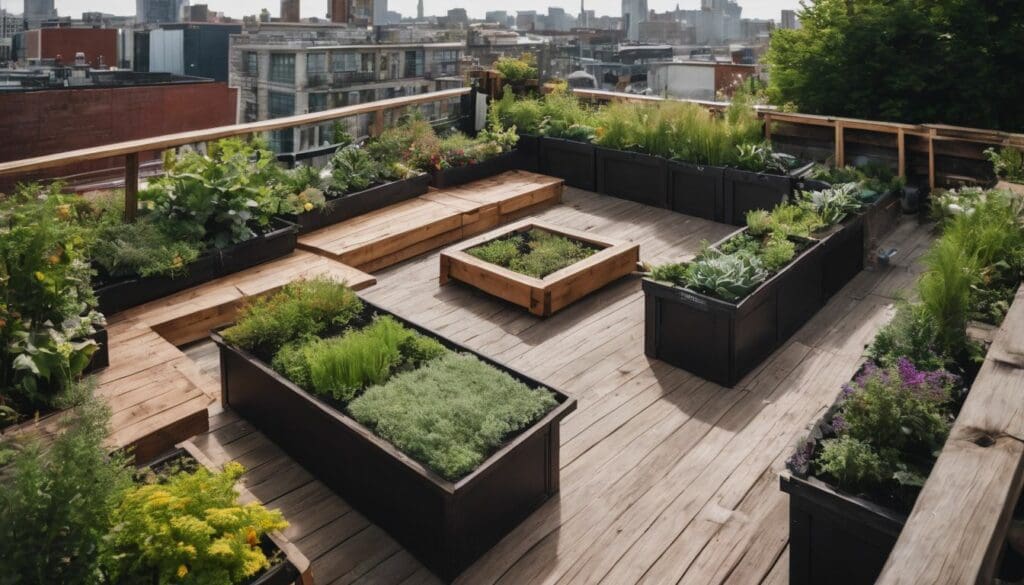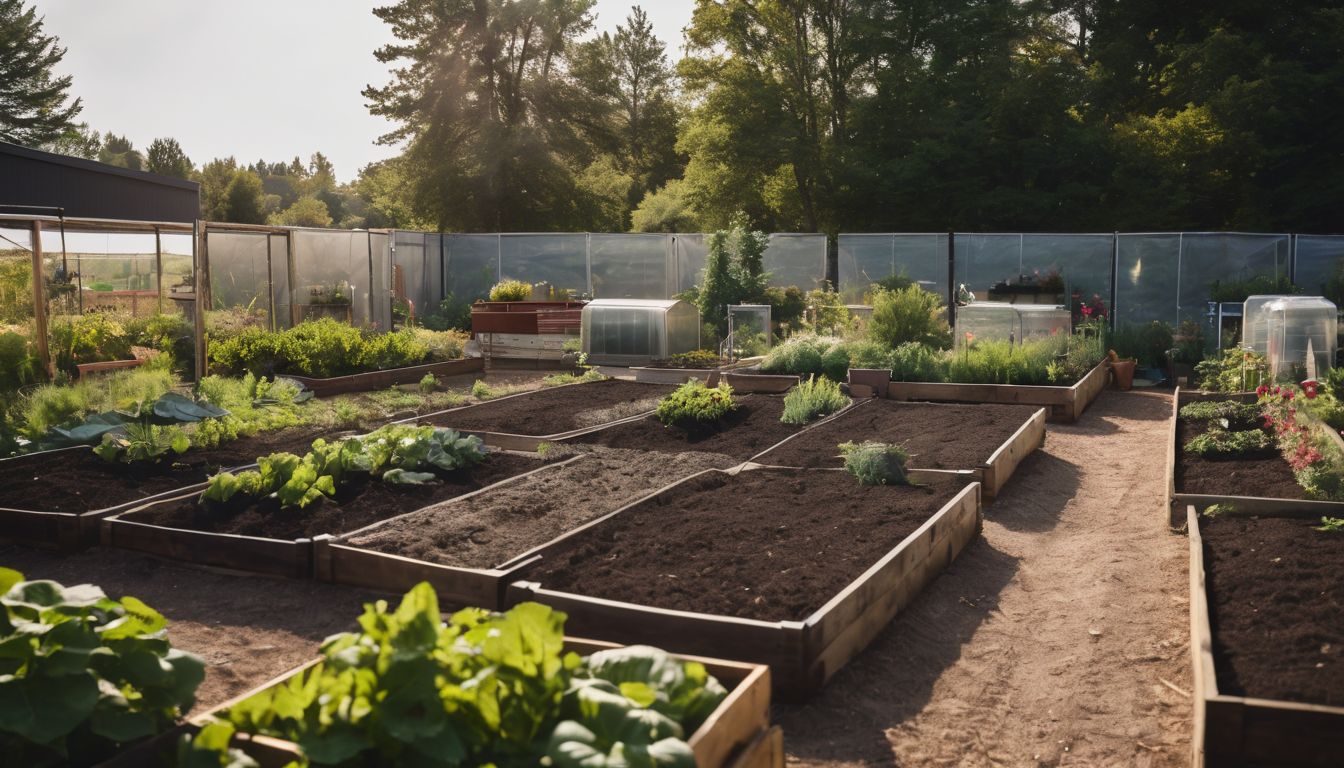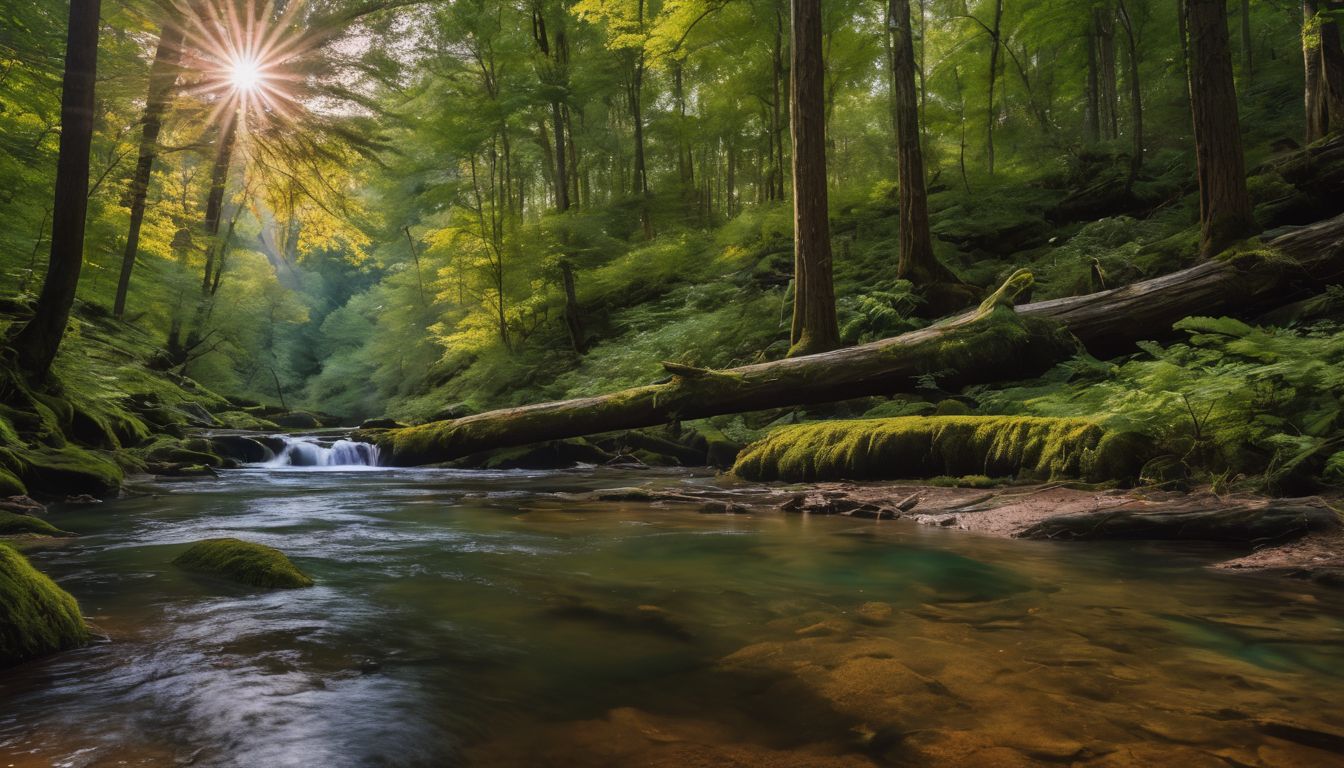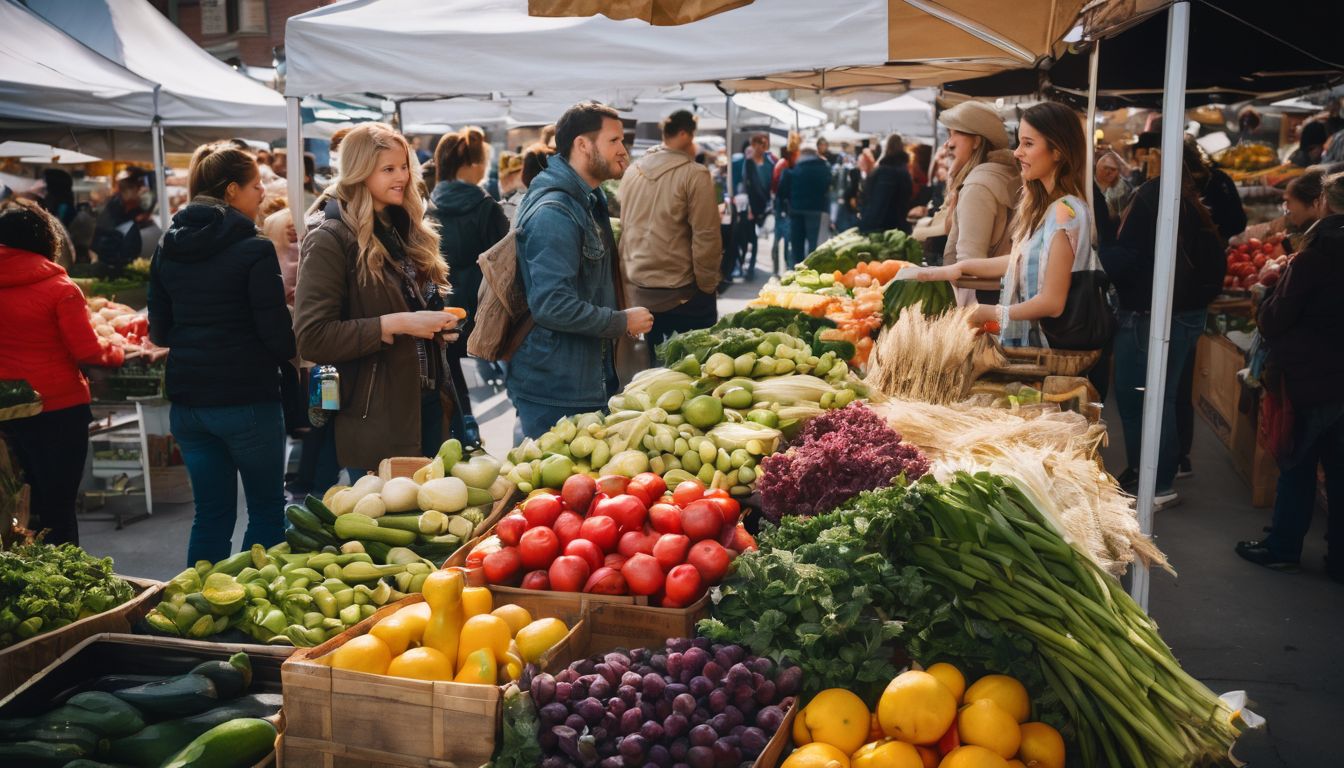Cities can sometimes give the impression that they’ve been moulded more for glass and steel giants than for the fluttering wings of birds or the industrious buzz of bees. Many of us have felt this disconnect, witnessing wildlife grappling to carve out a nook amidst the urban sprawl.
With a striking majority — over 80% — of Britain’s populace residing in towns and cities, there’s an escalating urgency to cultivate green spaces that not only exist but thrive with biodiversity.
We’re keenly aware that it’s high time our concrete landscapes bloomed into welcoming havens for nature’s myriad players. Our forthcoming article is brimming with actionable insights on how to orchestrate this transformation.
So prepare yourself to roll up your sleeves and contribute positively as we explore ways to harmonise our urban living spaces with the natural world around us.
Key Takeaways
- Urban green spaces are crucial sanctuaries for wildlife, offering them food, water, and shelter amidst the cityscape. These areas not only support biodiversity but also enhance our air quality by purifying it.
- Designing wildlife – friendly parks requires using native plant species, creating natural areas and corridors for animal movement, utilising sustainable landscaping practices, adding water features like ponds or wetlands, and educating the community about their importance.
- Creating urban wildlife habitats faces challenges such as limited space availability in cities, potential human-wildlife conflicts over resources, pollution issues affecting local ecosystems and the need for widespread public awareness regarding conservation efforts.
- Key strategies include establishing public gardens with diverse native flora which attract various species; providing shelters like nesting boxes and food sources through planting fruit trees; involving communities in education to promote responsible stewardship of these green spaces.
- Successful case studies from cities around the world show that with committed collaborative efforts between residents and organisations combined with targeted education programmes can lead to thriving urban ecosystems that benefit both wildlife populations and human inhabitants.
Understanding Wildlife Habitats in Urban Areas
Urban green spaces play a crucial role in providing habitats for wildlife, supporting biodiversity, and creating healthier ecosystems within urban areas. Designing wildlife-friendly parks involves incorporating features such as native plant species, water sources, and shelter to encourage the presence of diverse wildlife populations.
However, there are potential challenges related to space limitations and human-wildlife interactions that need to be addressed.
Benefits of urban green spaces for wildlife
Urban green spaces act as critical sanctuaries for wildlife amidst the concrete and steel of our cities. By offering a haven with essential resources such as food, water, and shelter, these areas support biodiversity and provide vital breeding grounds for a multitude of species.
Trees and plants in these green havens not only supply nourishment but also purify the air we breathe, making them indispensable allies in fostering urban ecology.
Our parks and gardens serve as stepping stones for migratory birds, allowing them a respite on their long journeys across continents. Such spaces connect fragmented habitats creating wildlife corridors that facilitate movement and genetic diversity among animal populations.
As we nurture these patches of nature within our urban landscape, we lay the groundwork for robust ecosystems to thrive alongside us.
Now let’s explore how we can design wildlife-friendly parks to enhance these benefits further.
How to design wildlife-friendly parks
- Incorporate a variety of native plant species that provide food and shelter for local wildlife, including trees, shrubs, and flowering plants. This diversity is essential for supporting a range of species.
- Design park layouts that include wildlife corridors and natural areas to allow animals to move freely throughout the space. These corridors help maintain biodiversity by connecting different habitats.
- Utilise sustainable landscaping practices such as reducing chemical pesticide use and promoting natural pest control methods to create a healthy environment for wildlife.
- Implement water features such as ponds or wetlands that support aquatic life while also attracting birds, amphibians, and other wildlife.
- Incorporate artificial structures like birdhouses, bat boxes, and nesting platforms to provide additional habitats for various species.
- Educate the community about the importance of creating wildlife – friendly parks and involve them in ongoing efforts to maintain these habitats.
Potential challenges
Creating wildlife habitats in urban areas presents several potential challenges that need to be addressed. One of the main obstacles is the limited space available in urban environments, making it difficult to allocate sufficient land for wildlife-friendly parks and gardens.
Another challenge is the competition for resources between humans and wildlife, as conflicts may arise over food sources and shelter. Additionally, pollution and urban development can impact biodiversity, posing a threat to local wildlife populations.
Furthermore, raising awareness among urban residents about the importance of creating wildlife habitats can be another challenge. Engaging communities in conservation efforts and promoting sustainable practices requires ongoing education and collaboration.
Strategies for Creating Wildlife-Friendly Cities
Establishing public gardens, incorporating native plant species, and providing shelter and food sources are essential strategies for creating wildlife-friendly cities. Collaboration with community members and ongoing education also play a crucial role in the success of these efforts.
Establishing public gardens
Incorporating native plant species
Incorporating native plant species is crucial for creating wildlife-friendly urban areas. It provides natural food sources and habitats for local wildlife, supporting biodiversity in urban environments. Here are some ways to incorporate native plant species:
- Use local plant species adapted to the local climate and soil conditions.
- Plant a variety of native trees, shrubs, and flowers to provide diverse habitats and food sources.
- Create pollinator gardens with native wildflowers to support bees, butterflies, and other pollinators.
- Avoid using invasive non – native plants that can outcompete native species and disrupt local ecosystems.
- Educate the community about the importance of using native plants in landscaping and gardening projects.
Providing shelter and food sources
After incorporating native plant species into urban green spaces, it is equally important to provide shelter and food sources for wildlife. Here are some effective strategies for providing shelters and food sources in urban areas:
- Constructing nesting boxes and birdhouses to offer safe havens for birds and small mammals.
- Planting fruit – bearing trees and shrubs to provide a natural food source for wildlife, including birds and small mammals.
- Installing bat boxes to create roosting spaces for bats, which play a crucial role in controlling insect populations.
- Creating brush piles using fallen branches and leaves to provide hiding spots for small animals like rabbits, squirrels, and insects.
- Establishing pollinator gardens with nectar-rich flowers to support bees, butterflies, and other essential pollinators.
- Implementing water features such as ponds or birdbaths to offer drinking water and bathing opportunities for wildlife.
Collaboration and education
To create successful wildlife habitats in urban areas, collaboration and education are essential. Working together with local communities, environmental organisations, and governmental bodies can lead to the development of effective wildlife management strategies.
By sharing knowledge about native plant species, providing guidance on creating shelter and food sources for urban wildlife, and collaborating on habitat restoration projects, we can make a real impact.
Educating the public about the importance of preserving biodiversity in urban areas is crucial. This can be achieved through workshops, educational programmes in schools, and community outreach initiatives.
Case Studies of Successful Urban Wildlife Habitats
Explore how urban green spaces have successfully supported diverse wildlife populations, from birds and butterflies to small mammals. Learn valuable lessons from these case studies on creating effective habitats in urban areas.
Examples of urban green spaces supporting diverse wildlife populations
Urban green spaces play a crucial role in supporting diverse wildlife populations in urban areas. Parks and gardens within city limits can provide essential habitats for numerous species, including birds, insects, small mammals, and even some larger animals.
For instance, urban green spaces such as Central Park in New York City or Hyde Park in London serve as vital refuges for various bird species and even support resident foxes and deer.
Additionally, smaller community gardens and green corridors contribute to maintaining biodiversity by offering food sources, shelter, and breeding grounds for different wildlife.
Lessons learned from these case studies
From these case studies, we learn the importance of incorporating native plant species to support diverse urban wildlife. Providing adequate shelter and food sources is crucial for sustaining wildlife populations in urban areas.
The successful examples highlight the significance of collaboration and education within communities to create and maintain wildlife-friendly green spaces.
We can enhance our understanding by examining how different strategies have been effectively implemented across various urban landscapes, ensuring that our efforts are tailored to each unique environment while promoting biodiversity.
Conclusion and Recommendations
In conclusion, it is vital to create wildlife habitats in urban areas to support biodiversity and preserve the natural environment. Ongoing efforts and collaboration with communities are essential for the long-term success of urban wildlife conservation.
Importance of creating wildlife habitats in urban areas
Creating wildlife habitats in urban areas is crucial for preserving biodiversity and promoting environmental sustainability. By establishing green spaces and incorporating native plant species, we can provide vital shelter and food sources for various wildlife species, including birds, insects, and small mammals.
Urban wildlife conservation also plays a significant role in creating a healthier ecosystem and enhancing the overall quality of life for city residents.
Wildlife-friendly cities not only support diverse animal populations but also contribute to the overall well-being of communities by providing recreational opportunities, improving air quality, and reducing the impact of urban heat islands.
Additionally, creating wildlife habitats in urban areas fosters a sense of environmental stewardship among citizens while offering valuable educational experiences for individuals interested in learning about local flora and fauna.
Need for ongoing efforts and collaboration with communities
To sustain the progress made in establishing wildlife habitats, ongoing efforts are crucial. We must engage with communities to maintain these spaces and ensure their continued success.
Collaborating with local residents fosters a sense of ownership and responsibility, leading to better stewardship of urban wildlife areas.
Communities play a vital role in the upkeep and preservation of wildlife-friendly parks. Their active involvement can improve awareness about the significance of these habitats, bolstering support for native plant species and diverse animal populations within urban areas.
FAQs
1. What are wildlife habitats in urban areas?
Wildlife habitats in urban areas are special spots within cities designed to support local animals and plants, often as part of parks or gardens.
2. Why should we create wildlife-friendly cities?
Creating wildlife-friendly cities helps protect nature by giving animals space to live and move about safely in urban environments through things like wildlife corridors.
3. How can urban planning help preserve wildlife?
Urban planning can integrate strategies for wildlife preservation by including green spaces and designing buildings that don’t harm animal homes.
4. Can I make my garden a place for urban wildlife?
Yes, you can! Turning your garden into a wildlife-friendly zone is simple with the right plants and structures that invite birds, insects, and other creatures.





